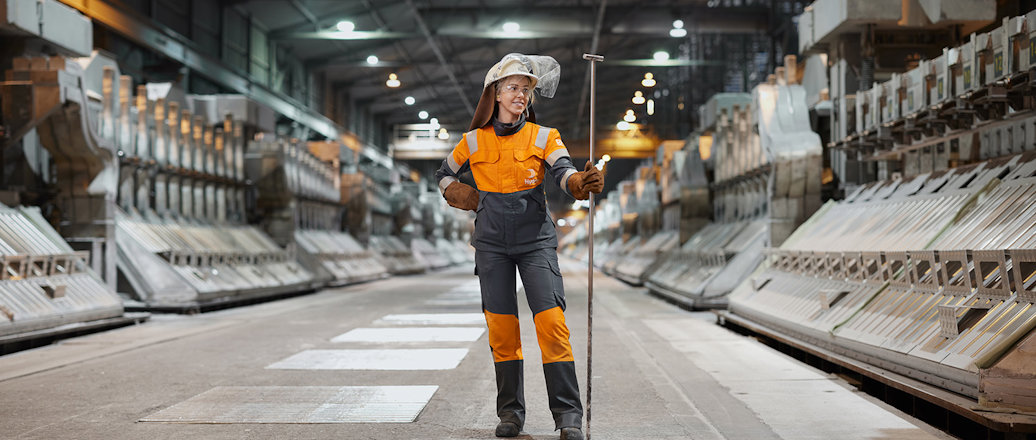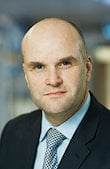- Robust results and strong extrusion margins, despite weaker markets and price pressure
- Improvement program and commercial ambitions on track for 2023 targets
- Alumetal acquisition significantly strengthens recycling position in Europe
- Good progress on low-carbon aluminium partnerships
- Increased 2023 capex guidance on currency translation, inflation and return-seeking investments
“The results reflect a weaker market, but also the effect of our continuous improvement initiatives throughout the organization. These improvement efforts are key to ensuring robustness and strengthening our value creation when markets are declining,” says President and CEO, Hilde Merete Aasheim.
Health and safety remain Hydro’s top priority for both employees and the communities where the company operates. The total recordable injury rate (TRI) is stable at a low level of 2.3 at the end of the quarter.
Demand for primary aluminium is declining in the short-term, while Chinese supply is returning, leading to the global primary balance weakening in recent months. In challenging markets, Hydro continues to deliver solid results and mitigate risks by improving margins, operational excellence and reducing costs. Continuous improvements strengthen the position on cost curves and ensure robustness. Hydro is on track to deliver on the full year improvement program target of NOK 8.4 billion. Standing strong and delivering in short-term uncertainties provides a solid foundation for pursuing long-term opportunities. Hydro is making progress towards achieving the 2027 accumulated improvement and commercial targets of NOK 14 billion combined.
“Commercial excellence continues to give good rewards, improving the robustness of our margins in a period with large declines in volumes across Europe and North America. A stronger market position through our greener aluminium product offering separates us from our peers and makes us attractive for partnerships,” says Aasheim.
During the second quarter, European and North American demand for extrusions have decreased significantly compared to the same quarter last year. Despite falling markets, Hydro Extrusions continues to deliver margin robustness through dedicated improvement efforts, by proactively adjusting costs and gaining market share, margin uplift, and benefiting from greener product offering. These efforts have shown strong results compared to our peers and strengthen the roadmap to deliver NOK 8.0 billion adjusted EBITDA for Hydro Extrusions in 2025.
A key pillar within the Hydro 2025 strategy to strengthen the position in low-carbon aluminium is recycling. Hydro has an ambition to more than double the use of post-consumer scrap by 2025 compared to the 2020 baseline, which is scrap that has gone a full lifecycle and comes with zero emissions. On June 30, Hydro completed its tender offer for the Polish recycler Alumetal S.A with more than 97 percent of the shares. The acquisition strengthens Hydro’s recycling position in Europe, and widens its product offering in the low-carbon and scrap based foundry alloy market. It contributes with 150,000 tonnes of annual post-consumer scrap towards the 2025 target of using 670,000 tonnes post-consumer scrap annually. Alumetal delivered a 12-month rolling EBITDA of NOK 700 million as of the first quarter of 2023. The share purchase was settled on July 7.
Additional progress was made to deliver on Hydro’s recycling strategy. Hydro signed an agreement to purchase land in Torija, Spain, with the aim of constructing a state-of-the-art aluminium recycling plant, producing 120,000 tonnes annually. The facility will further strengthen Hydro’s capabilities to produce low-carbon aluminium and ensure more scrap is kept in Europe. Also, the recycling facilities in Navarra and Sjunnen are ramping up recycling capacity with 20,000 tonnes each, and the first metal was delivered from HyForge Rackwitz. These are all important steps in increasing Hydro’s recycling capacity by 1 million tonnes by 2027, where roughly half is expected to come from post-consumer scrap.
Hydro is gaining further ground on low-carbon aluminium, and achievements have been made across the value chain to meet the increasing demand for greener products. Hydro partnered with Saint-Gobain Glass to recycle and decarbonize building facades by integrating the low-carbon solutions offered by both companies. The partnership includes investments in urban mining, a method that recycles end-of-life aluminium and glass. Another example is Hydro will contribute with its low-carbon aluminium CIRCAL 100R to produce the cleanest dirt bike ever, together with Cake and Vattenfall. Hydro has also signed a letter of intent with the UK based bicycle company, Brompton, to deliver low-carbon aluminium to reduce footprint and weight for their iconic folding bicycles.
Hydro’s customers are recognizing Hydro’s industry leadership in greener aluminium, and on June 19, Hydro received the Mercedes-Benz sustainability award after delivering the first batch of Hydro REDUXA 3.0 earlier this year. It passed testing at Mercedes-Benz and will be introduced in large scale production this year, starting with the EQS and EQE series of electric cars.
“Our customers increasingly care about more than the price and quality of aluminium products, including where and how it is produced. All parts of our sustainability agenda, from our net-zero ambition to our social developments in Brazil and around the world, are key criteria for our most advanced customers. They ask for transparency and traceability throughout the aluminium value chain, and I am happy that a major customer like Mercedes-Benz acknowledges our efforts with granting us their sustainability award,” says Aasheim.
During the second quarter of 2023, the world’s first batch of recycled aluminium using green hydrogen as an energy source was successfully produced at Hydro’s extrusion plant in Navarra, Spain. This is an important step in verifying green hydrogen as an emission free fuel to address the hard to abate industry emissions.
The transition to a lower-carbon society is dependent on policy initiatives like the European Green Deal. There are several initiatives on both climate, energy, sustainability and taxonomy that are important for the development of a greener economy. The political direction is aligned with Hydro’s growth strategy across the value chain. One important aspect of the Green Deal is circularity and what it means for recycling of aluminium. According to a secondary technical legislation under adoption, the Carbon Boarder Adjustment Mechanism (CBAM) will label aluminium based on remelted industrial scrap as “carbon free,” with zero-carbon cost on import. This allows for greenwashing of carbon intensive products and undermines the competitiveness of European producers subject to ETS, the EU market for low-carbon products and Green Deal objectives. This needs to be addressed and updated before the CBAM is finally introduced to ensure the CBAM does not cause the problem it seeks to address, but rather solves it.
There is a need for more renewable energy, and Hydro Rein is maturing and growing the portfolio to meet this demand. The second quarter has seen good progress on the construction of Stor-Skälsjön, Mendubim, Feijao and Boa Sorte. At the same time the development portfolio is growing, and in the second quarter, Hydro Rein announced agreements with GreenGo Energy to acquire and develop four solar projects in the Nordics, which will together deliver 528 MW annual capacity, starting from 2026. Based on an overall assessment of the opportunities in its portfolio and capital allocation priorities, Hydro Rein decided not to participate in a previously announced competition to develop a large scale, bottom fixed offshore wind farm in the Norwegian North Sea. Hydro actively continues to evaluate financing alternatives for Hydro Rein and dialogues are constructively evolving.
Hydro Energy signed a long-term power purchase agreement (PPA) with Statkraft for the supply of 6.6 TWh of renewable power over a 15-year period. The PPA will secure parts of the Norwegian aluminium smelters with renewable energy until 2038, which continues to enable Hydro to produce aluminium in Norway with a carbon footprint of about 75 percent less than the global average.
On April 27, Hydro signed an agreement with Glencore, who will acquire 30 percent of the Brazilian alumina refinery Hydro Alunorte and Hydro’s 5 percent ownership in the Brazilian bauxite producer Mineracão Rio do Norte (MRN). Hydro announced that proceeds from the transaction would be used for strategic growth and shareholder distribution.
In the second quarter, Hydro undertook a review of the capex portfolio for 2023 and has raised the annual guidance from NOK 16.5 billion (including the Alumetal and Hueck transactions), to NOK 20.5 billion, where NOK 2.7 billion is driven by currency translation effects and inflation, and around NOK 1.5 billion is related to the higher Alumetal bid, running capex in Alumetal and Hueck, and other return-seeking investments. Estimated capex for Hydro Rein in 2023 has increased from NOK 2.5 billion to NOK 3 billion, also driven by currency translation. No further increased capital allocation is planned for 2023.
Results and market development
European smelters see declining margins due to low LME, premiums, and high energy prices, with more curtailments announced in the second quarter and restarts less likely. High interest rates are continuing to put pressure on demand. Demand is weakest in the building and construction sector, and general engineering, while automotive is still holding up in most regions.
Russian metal in LME warehouses has increased to a record high 80 percent from under 10 percent since before the war in Ukraine started, causing concern, as a large part of industry participants, including Hydro, are self-sanctioning Russian products. Due to lack of sanctions from the EU, Russian metal is increasingly being exported into Europe with added pressure on regional premiums. Since the shutdown of the Nikolaev refinery in Ukraine and the Australian alumina export ban to Russia, Russian aluminium producers are continuing alumina imports from China, and from other new sources outside China.
Second quarter 2023 adjusted EBITDA for Bauxite & Alumina decreased, compared to the second quarter of last year. Lower alumina sales prices were partly offset by lower raw material prices and lower port costs as replacement of a decommissioned crane was completed. The average Platts Alumina Index (PAX) started the quarter at USD 362 per mt and drifted lower throughout the period, ending at the quarter low of USD 330 per mt, driven by declining Chinese alumina prices. Compared to the second quarter of 2022, the average Platts Alumina Index was 8 percent lower.
Adjusted EBITDA for Aluminium Metal decreased in the second quarter of 2023, compared to the second quarter of 2022, mainly due to lower all-in metal prices, partly offset by positive currency effects, increased CO2 compensation, lower raw material costs, and positive contribution from power sales. Global primary aluminium consumption was up 2 percent compared to the second quarter of 2022, driven by a 6 percent seasonal increase in China. The three-month aluminium price decreased throughout the second quarter of 2023, starting the quarter at USD 2,397 per mt and ending at USD 2,151 per mt.
Adjusted EBITDA for Metal Markets decreased in the second quarter of 2023, compared to the same quarter last year. Results from the recyclers decreased compared to a record strong 2022 second quarter, driven by lower sales volumes and weakening margins. Increased results from sourcing and trading activities were more than offset by negative inventory valuation and currency effects.
Extrusions adjusted EBITDA for the second quarter of 2023 is slightly lower than the same quarter last year, driven by lower sales volumes, and higher fixed and variable costs, positively offset by increased sales margin and currency effects.
European demand for extrusions in the second quarter of 2023 is estimated to have decreased 22 percent, compared to the same quarter last year, but increased 1 percent compared to the first quarter of 2023, which also saw weak demand. Demand for residential building and construction, and industrial segments have remained weak in the second quarter, while demand for automotive is growing steadily. Some subsegments, such as solar, are also showing robust growth.
North American extrusion demand is estimated to have decreased 15 percent during the second quarter of 2023, compared to the same quarter last year, and 1 percent compared to the first quarter of 2023. Demand is particularly weak in the residential building and construction sector as higher interest rates are impacting the housing market, while the automotive segment continues to strengthen.
Adjusted EBITDA for Hydro Energy in the second quarter of 2023 is on a similar level, compared to the same period last year. Higher production was offset mainly by lower gain on price area differences, lower prices, and loss on a 12-month internal fixed price purchase contract from early October 2022.
Nordic power prices were on average lower in the second quarter of 2023, compared to the previous quarter, and significantly lower than in the same quarter last year. The decrease is a result of lower continental spot power prices on the back of lower gas and coal prices, and seasonality. Significant price area differences in the Nordic region have continued through the second quarter of 2023. The price area differences were slightly higher compared to the previous quarter, but still significantly lower than the same quarter last year.
Other key financials
Compared to the first quarter, Hydro’s adjusted EBITDA decreased from NOK 7,525 million to NOK 7,098 million in the second quarter 2023. Lower realized aluminium and alumina prices were partly offset by lower raw material costs and higher margins.
Net income from continuing operations amounted to NOK 5,056 million in the second quarter of 2023. In addition to the factors described above, net income from continuing operations included a NOK 3,010 million unrealized derivative gain on LME related contracts, a net foreign exchange gain of NOK 264 million and a NOK 148 million loss from unrealized derivative power and raw material contracts.
Hydro's net debt increased from NOK 1.7 billion to NOK 11.3 billion during the second quarter of 2023. The net debt increase was mainly driven by a NOK 11.5 billion dividend to shareholders and increased investments, partly offset by a strong EBITDA contribution and a net operating capital release.
Adjusted net debt increased from NOK 8.5 billion to NOK 15.9 billion, largely due to the increase in net debt of NOK 9.6 billion, partly offset by reduced collateral of NOK 1.7 billion and a reduction in net pension liabilities of NOK 0.9 billion.
Reported earnings before financial items and tax (EBIT) and net income include effects that are disclosed in the quarterly report. Adjustments to EBITDA, EBIT and net income (loss) are defined and described as part of the alternative performance measures (APM) section in the quarterly report.
_____________________________________________________________
The information was submitted for publication from Hydro Investor Relations and the contact persons set out above. Certain statements included in this announcement contain forward-looking information, including, without limitation, information relating to (a) forecasts, projections and estimates, (b) statements of Hydro management concerning plans, objectives and strategies, such as planned expansions, investments, divestments, curtailments or other projects, (c) targeted production volumes and costs, capacities or rates, start-up costs, cost reductions and profit objectives, (d) various expectations about future developments in Hydro's markets, particularly prices, supply and demand and competition, (e) results of operations, (f) margins, (g) growth rates, (h) risk management, and (i) qualified statements such as "expected", "scheduled", "targeted", "planned", "proposed", "intended" or similar. Although we believe that the expectations reflected in such forward-looking statements are reasonable, these forward-looking statements are based on a number of assumptions and forecasts that, by their nature, involve risk and uncertainty.
Various factors could cause our actual results to differ materially from those projected in a forward-looking statement or affect the extent to which a particular projection is realized. Factors that could cause these differences include, but are not limited to: our continued ability to reposition and restructure our upstream and downstream businesses; changes in availability and cost of energy and raw materials; global supply and demand for aluminium and aluminium products; world economic growth, including rates of inflation and industrial production; changes in the relative value of currencies and the value of commodity contracts; trends in Hydro's key markets and competition; and legislative, regulatory and political factors. No assurance can be given that such expectations will prove to have been correct. Except where required by law, Hydro disclaims any obligation to update or revise any forward-looking statements, whether as a result of new information, future events or otherwise. This information is considered to be inside information pursuant to the EU Market Abuse Regulation and is subject to the disclosure requirements pursuant to Section 5-12 the Norwegian Securities Trading Act.
: 21 July 2023









